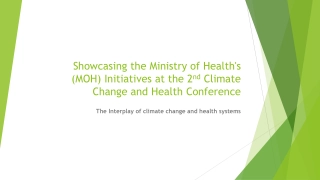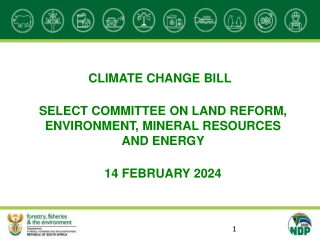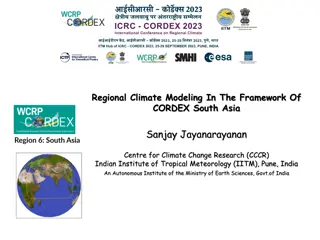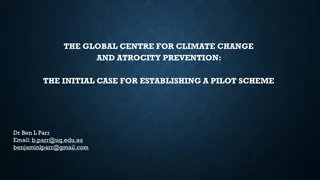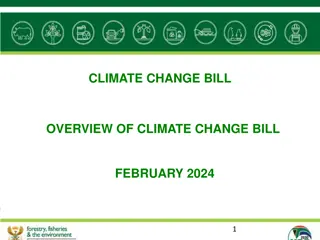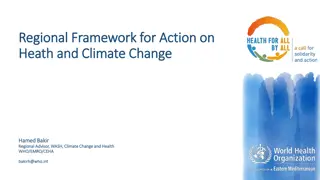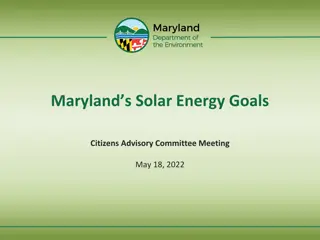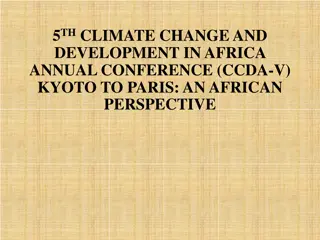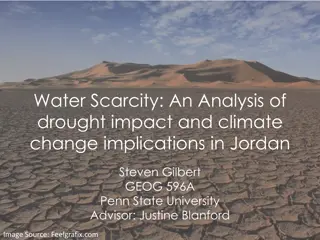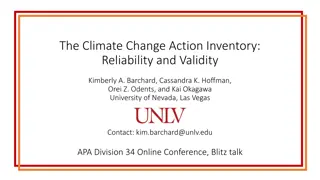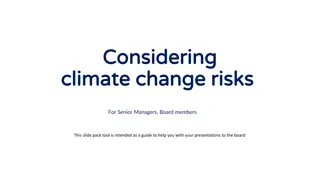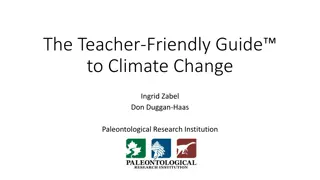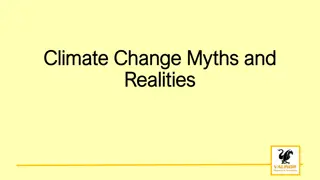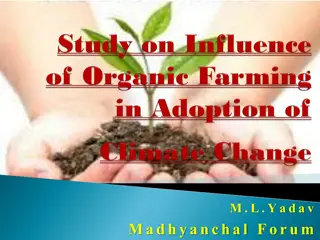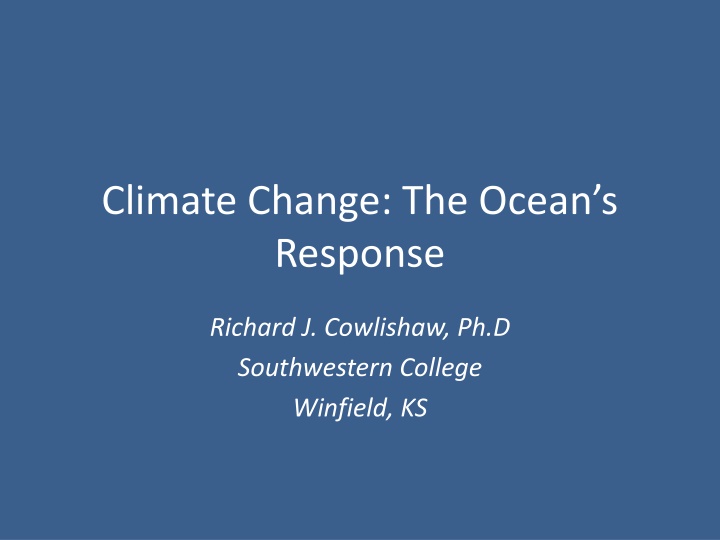
Impacts of Climate Change on Ocean Ecosystems and Circulation
Discover the key threats facing ocean ecosystems, including pollution, overfishing, and climate change. Explore how the oceans act as a heat sponge, the deep ocean heating process, and the effects of warming on ocean circulation patterns. Learn about ocean surface currents, the Gulf Stream's impact on Europe's climate, and the crucial role of deep ocean currents in regulating global temperatures.
Uploaded on | 1 Views
Download Presentation

Please find below an Image/Link to download the presentation.
The content on the website is provided AS IS for your information and personal use only. It may not be sold, licensed, or shared on other websites without obtaining consent from the author. If you encounter any issues during the download, it is possible that the publisher has removed the file from their server.
You are allowed to download the files provided on this website for personal or commercial use, subject to the condition that they are used lawfully. All files are the property of their respective owners.
The content on the website is provided AS IS for your information and personal use only. It may not be sold, licensed, or shared on other websites without obtaining consent from the author.
E N D
Presentation Transcript
Climate Change: The Oceans Response Richard J. Cowlishaw, Ph.D Southwestern College Winfield, KS
Key Threats to Ocean Ecosystems International Programme on the State of the Ocean (IPSO) report highlights key threats to ocean ecosystems Pollution Bycatch Overfishing Eutrophication Aquaculture Habitat Alteration Climate Change Invasive Species Coastal Development http://www.stateoftheocean.org/science/state-of-the-ocean-report/
The Big Heat Sponge Oceans have absorbed 90% of the heat generated by humans Heat capacity of the ocean has limits Atmospheric warming will accelerate when limit is reached Nuccitelli et al. 2012
Deep Ocean Heating Glecker et al., 2016 Nature Climate Change Heat penetrates to ocean depths over time
Warming Impacts on the Ocean Alteration of surface currents Weakening of thermohaline currents Strengthening of permanent thermocline Sea-level rise
Ocean Circulation Surface winds drive movement of water Surface currents distribute heat between equator and poles Spherical shape of planet and its rotation causes currents to deflect along their path Right deflection in Northern Hemisphere Left deflection in Southern Hemisphere Establishes ocean gyres
Ocean Surface Circulation Warm air/water to north, cold air/water to south
Europe: So North Yet So Temperate Gulf Stream conveyor of heat to high latitudes
Deep Ocean Currents Super-cooling at the poles Cooling and ice formation increased density Cold, oxygen-rich water sinks to depth Forms deep bottom water currents Thermohaline currents
Overturning of the ocean volume on a 1000- year scale
Reducing Ocean Circulation Decreasing temperature differences between poles and equator weakens or alters surface currents Potential cool down Europe weakening of Gulf Stream Freshwater from melting ice reduces seawater density reduces bottom water formation Reduce the amount of oxygenated water at depth threat of hypoxia in deep ocean
Strengthening Thermocline Thermocline depth interval of rapid temperature change Density gradient Separates surface waters from the deeper ocean Warming air temperatures will likely strengthen it Reduce primary production and CO2 uptake by ocean (Warm) Light (Cold) Dissolved Nutrients http://marinebio.org/oceans/temperature/
Sea-Level Rise Average sea level rising 1.5-2.0 mm annually 21st century projections: 180-590 mm (7.0-23 inches) Ways sea-level can rise with global warming Melting of land ice sheets and glaciers Thermal expansion warm water occupies greater volume than cold water Uncertainties on how much and when >600 million people at risk by rising seas
Ocean Acidification CO2uptake by oceans has two consequences: Offset human-produced CO2emissions Increase the acidity of the oceans Ocean pH has decreased by 0.1 pH units since 1860 30% increase in acidity
Predicted Impacts on Marine Life Increasing water temperatures Changes in timing and location of primary production decrease in food predictability Change in ranges and migration patterns Mobile species - Relocation to cooler waters Sessile species tolerate, evolve or die Coral bleaching and die-back Increased threat of water-borne diseases Increasing hypoxia in deeper waters
Predicted Impacts on Marine Life Increasing acidity Reductions in calcifying organisms, those with calcium carbonate structures (i.e. shells) Span the food chain: algae, protozoa, zooplankton, corals, echinoderms, crustaceans, molluscs Blood acidosis; reduced metabolic rates Suppressed immune systems Impaired olfaction and feeding behavior Noisier ocean problems of sound-dependent species
The Sixth Great Extinction Event Permian Extinction (The Great Dying) 252 million years ago 96% of all marine species and 70% of all terrestrial species went extinct Causes? Not clear, but climate change and change in ocean circulation was certainly in the mix Evidence that the next great extinction event is underway Major difference: Brought upon by another species (humans)
An Ocean in Crisis We ve arrived at the tipping point for the oceans Oceans are big but have limits we are realizing those limits One billion people unsustainably rely on the oceans for their protein what will 2050 look like? Without action on climate change we will push the Sixth Mass Extinction forward

